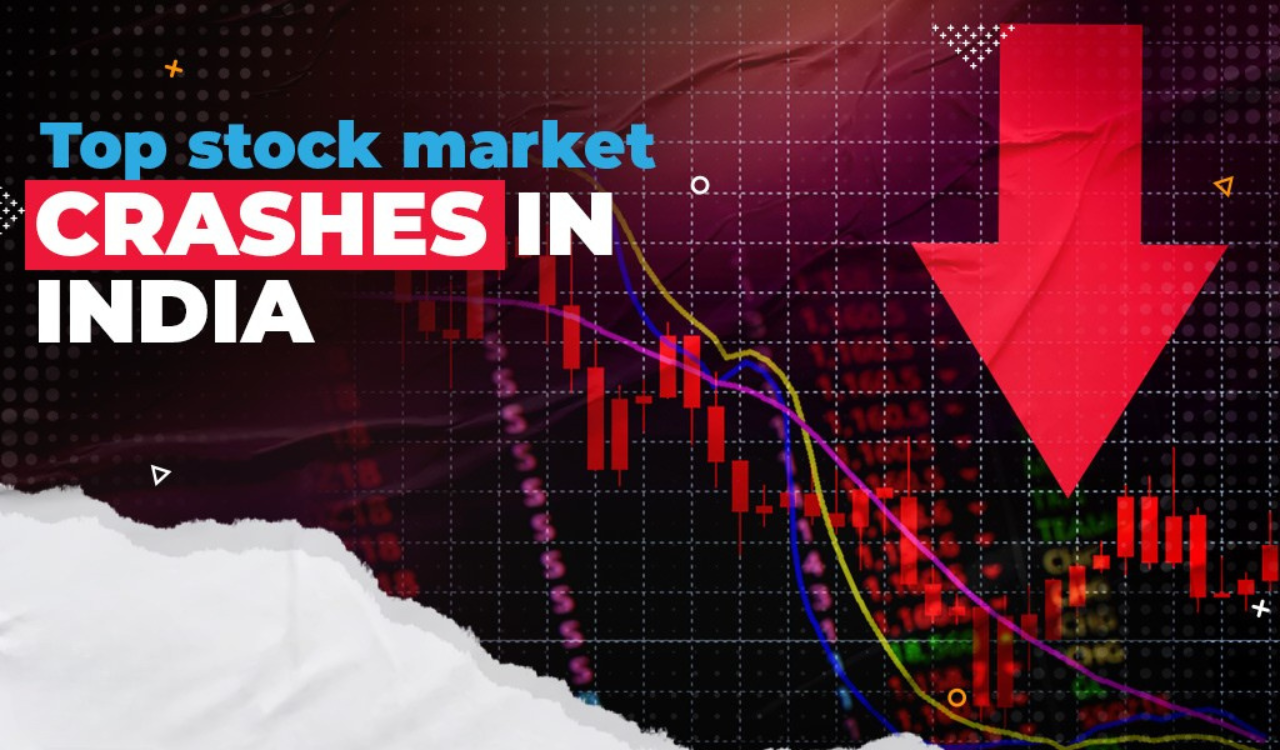India’s stock market has experienced several dramatic crashes over the decades—sharp declines that have not only erased billions in investor wealth but also changed the way financial systems are regulated and perceived. The Sensex and Nifty, the two major stock indices, often reflect the heartbeat of the Indian economy. When they tumble, the effect ripples through every corner of the financial world. From corporate scams to global recessions, these crashes reveal much about market psychology, economic resilience, and the lessons learned over time.
This article takes a closer look at the most significant stock market crashes in India, their causes, impact, and how they shaped the future of investing in the country.
What is a Stock Market Crash?
A stock market crash is a sudden and sharp decline in the value of stocks listed on the exchange. It typically occurs due to panic selling, unexpected economic or geopolitical events, or systemic failures in financial institutions. In India, the key indicators of a crash are steep falls in the Sensex and Nifty indices. These crashes are not just about falling numbers; they represent huge losses in investor wealth, widespread fear, and often, policy reforms.
1. The 1992 Harshad Mehta Scam
Date: April 1992
Sensex Decline: 570 points or 12.77 percent on April 29, 1992
Cause: Stockbroker Harshad Mehta exploited loopholes in the banking system to illegally divert around one thousand crore rupees into the stock market. By artificially inflating stock prices, he triggered a massive rally. However, when the scam was uncovered by journalist Sucheta Dalal, it led to an immediate collapse.
Impact:
- Approximately four thousand crore rupees of investor wealth was wiped out.
- Investor trust in the market was deeply shaken.
- The scam prompted the establishment of the Securities and Exchange Board of India (SEBI) as a powerful regulatory authority.
- Several reforms were introduced to improve transparency and accountability in the stock markets and banking system.
2. The 2008 Global Financial Crisis
Date: January 2008 to March 2009
Sensex Fall: From 21,206 points in January 2008 to 8,160 points in March 2009, a drop of about 61.5 percent
Largest Single-Day Fall: 1,408 points or 7.4 percent on January 21, 2008
Cause: The collapse of Lehman Brothers in the United States triggered a global recession. Foreign Institutional Investors (FIIs) rapidly pulled out funds from emerging markets like India, fearing financial contagion.
Impact:
- Indian markets mirrored the panic seen across global exchanges.
- Investor confidence dropped to record lows.
- While the economy slowed down, India’s strong banking sector helped cushion the blow.
- The Sensex eventually recovered by 2010, showcasing the resilience of the Indian market.
3. The 2015 China Market Crash
Date: August 24, 2015
Sensex Drop: 1,624 points or 5.94 percent
Cause: China’s decision to devalue the yuan created panic about a potential slowdown in the world’s second-largest economy. Global commodity prices also crashed during this period, and concerns over Brexit added to the uncertainty.
Impact:
- Indian stocks tumbled, and several sectors, especially export-oriented ones, faced pressure.
- Although short-lived, the crash highlighted the increasing interconnectedness of global financial markets.
- The Indian economy recovered quickly due to strong domestic fundamentals.
4. The 2020 COVID-19 Crash
Date: March 2020
Sensex Drop: 3,934 points or 13.15 percent on March 23, 2020
Cause: The outbreak of COVID-19 led to worldwide lockdowns, halted economic activity, and caused widespread fear. Uncertainty regarding the duration and impact of the pandemic led to panic selling across global markets.
Impact:
- Indian markets saw one of their steepest single-day falls ever.
- Massive job losses and disruptions across sectors were witnessed.
- The government introduced fiscal stimulus packages and the Reserve Bank of India took supportive measures to stabilize the economy.
- Remarkably, markets staged a sharp V-shaped recovery later in the year as vaccination efforts and global stimulus provided hope.
5. The 2022 Russia-Ukraine Conflict
Date: February to March 2022
Sensex Fall: Around 2,700 points on February 24, 2022
Cause: The onset of the Russia-Ukraine war led to a surge in crude oil prices, disrupted global supply chains, and created fresh geopolitical uncertainty.
Impact:
- The Indian market responded with a sharp fall amid fears of global inflation and reduced growth.
- Foreign investors pulled back temporarily, while domestic investors remained somewhat resilient.
- Sectors like energy and defense saw increased activity, while auto and manufacturing suffered due to input cost pressures.
6. The 2024 Hindenburg-Adani Group Crisis
Date: January 2024
Sensex Reaction: Over 1,000 points lost in the days following the report
Cause: U.S.-based investment research firm Hindenburg Research released a detailed report accusing the Adani Group of stock manipulation and accounting fraud. The allegations led to a rapid decline in the group’s stock prices.
Impact:
- The Adani Group lost over 100 billion dollars in market capitalization in a matter of weeks.
- Retail and institutional investors with exposure to the group faced heavy losses.
- Questions were raised on corporate governance, transparency, and the role of regulators.
- The incident triggered broader discussions about the credibility of large business conglomerates in India.
Other Notable Mentions
2013 Taper Tantrum:
- The U.S. Federal Reserve’s announcement of tapering bond purchases led to massive outflows from emerging markets, including India.
- The rupee depreciated sharply, and the stock market corrected significantly.
2019 IL&FS Crisis:
- The default by Infrastructure Leasing & Financial Services (IL&FS) created a credit crunch, especially impacting Non-Banking Financial Companies (NBFCs).
- Market sentiment was severely affected due to fears of a liquidity crisis.
What is Causing Volatility in 2025?
The year 2025, though not marked by a massive crash so far, has seen increasing volatility in the Indian markets due to several evolving factors:
- Uncertainty in global oil prices due to rising tensions in the Middle East
- Mixed signals from central banks about interest rate cuts
- The rise of algorithmic trading powered by artificial intelligence
- Upcoming elections in key economies including the United States and parts of Europe
- Domestic concerns over inflation and fiscal deficit
These developments have contributed to nervous trading sessions, increased intraday volatility, and a more cautious approach by both retail and institutional investors.



 Bhartiya Bhasha Utsav 2025: Celebrating ...
Bhartiya Bhasha Utsav 2025: Celebrating ...
 Starlink Internet: Revolutionising Globa...
Starlink Internet: Revolutionising Globa...
 Google 2025: Top Searches by Indian User...
Google 2025: Top Searches by Indian User...







